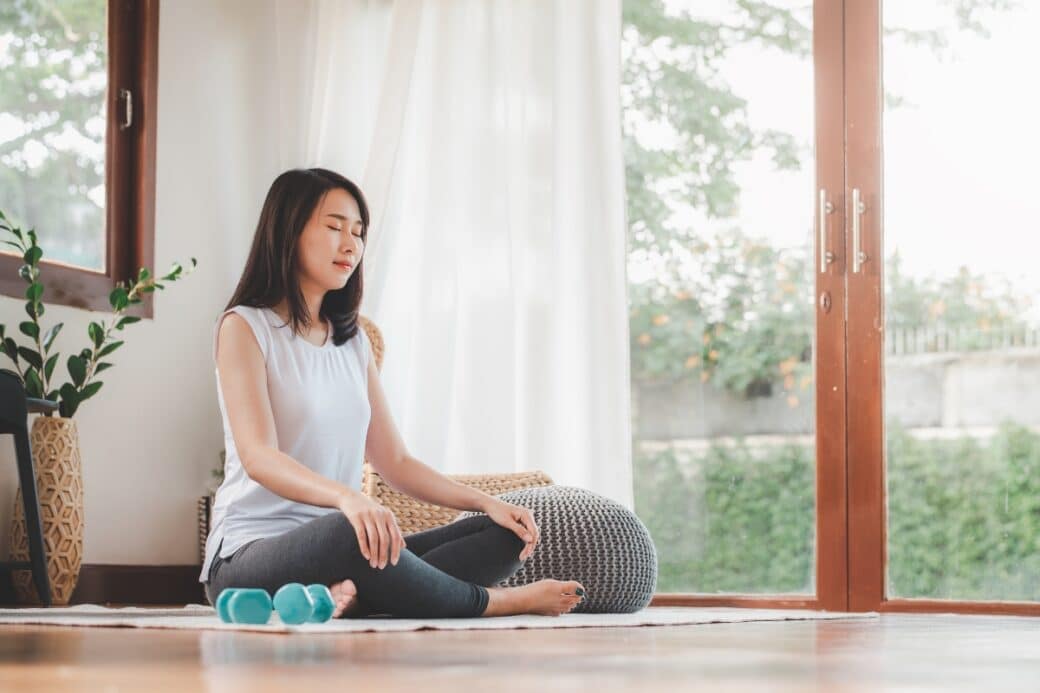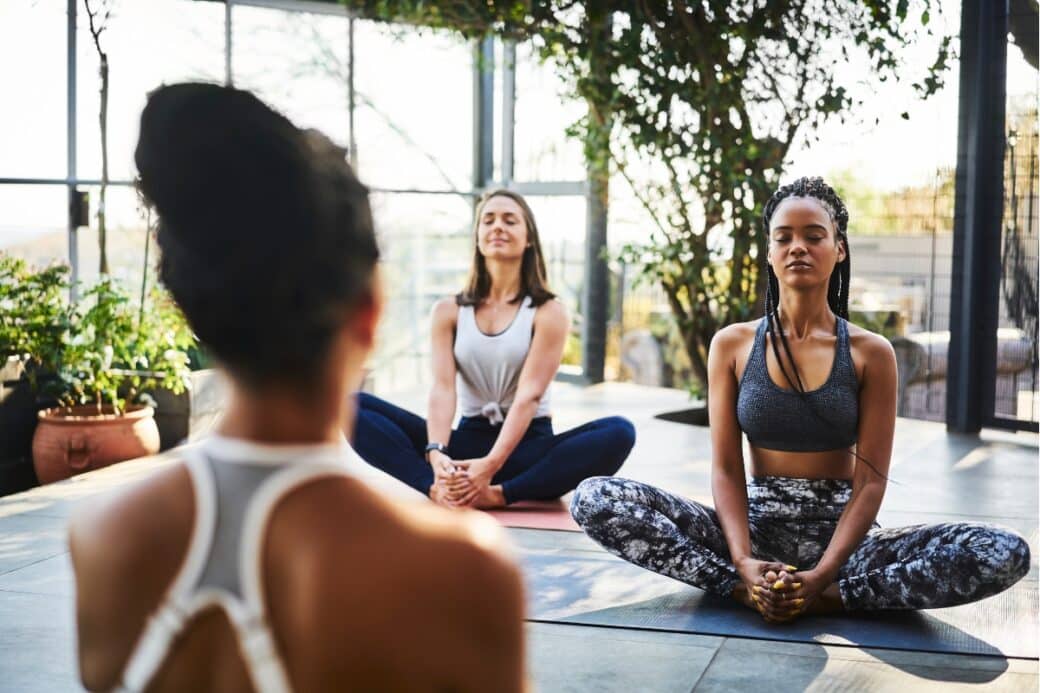In this article, you will discover the power of mindfulness exercises for adults and how they can help you cultivate a greater sense of awareness in your daily life. By incorporating simple yet effective practices into your routine, you will not only enhance your ability to be present and fully engage with the world around you but also develop a deeper understanding of your thoughts, emotions, and behaviors. Whether you are seeking to reduce stress, improve focus, or foster personal growth, these exercises will guide you on a transformative journey towards a more mindful and fulfilling existence. So, grab a comfortable seat, take a deep breath, and let’s explore the realm of mindfulness together.

Understanding Mindfulness
Defining mindfulness
Mindfulness is the practice of intentionally bringing one’s attention to the present moment without judgment. It involves a conscious awareness of your thoughts, feelings, sensations, and surroundings, without getting caught up in them or reacting impulsively. In this state, you observe your experiences with curiosity and compassion, fostering a greater sense of self-awareness and overall well-being.
The science behind mindfulness
Scientific research has shown that regularly practicing mindfulness can have a profound impact on both our mental and physical health. Studies have revealed that mindfulness meditation can reduce stress, anxiety, and depression, while also improving attention, concentration, and cognitive function. It can even positively influence our immune response, blood pressure, and overall longevity. The science behind mindfulness is still being explored, but the evidence so far suggests that it can significantly transform our lives for the better.
Benefits of mindfulness
Engaging in a consistent mindfulness practice can bring about a multitude of benefits. Firstly, it helps to reduce stress and promote relaxation by redirecting your focus to the present moment. Mindfulness also enhances emotional regulation, allowing you to respond to challenging situations with more compassion and clarity rather than reactive behavior. Additionally, it cultivates a greater sense of self-compassion, which can lead to improved self-esteem and mental well-being. Overall, mindfulness empowers individuals to better manage their thoughts and emotions, leading to a more fulfilling and meaningful life.
Connection Between Mindfulness and Awareness
Defining awareness in the context of mindfulness
Awareness, in the context of mindfulness, refers to a deep understanding and acceptance of one’s thoughts, emotions, and physical sensations in the present moment. It involves a heightened sense of attention and observation, allowing you to truly see and experience your reality without judgment or attachment. By cultivating awareness, you become more attuned to the fluctuations of your mind and gain insight into the underlying patterns and tendencies that shape your thoughts and behaviors.
Mindfulness as a tool for cultivating awareness
Mindfulness serves as an invaluable tool for nurturing awareness. By practicing mindfulness, you can deliberately bring your attention to the present moment and observe your thoughts and emotions as they arise. This non-judgmental awareness allows you to gain a deeper understanding of your mental and emotional processes, and how they shape your perception of reality. With time and practice, mindfulness enables you to develop a more intimate relationship with your inner self and to cultivate a greater sense of self-awareness.
Linking mindfulness and awareness to wellness
The link between mindfulness and wellness is undeniable. As you cultivate awareness through mindfulness, you become more in tune with your physical sensations, giving you insights into your body’s needs and promoting self-care. By being aware of your thoughts and emotions, you can identify negative patterns or harmful beliefs and work towards reframing them for a healthier mental state. Additionally, mindfulness enhances our ability to be fully present and engaged in our relationships, leading to deeper connections and increased overall satisfaction in life.

Mindfulness Techniques for Everyday Life
Breathing exercises
One of the simplest yet most powerful mindfulness techniques is focused breathing. Taking a few minutes each day to pay attention to your breath can help anchor your awareness in the present moment. Start by finding a quiet space where you can sit comfortably. Close your eyes and bring your attention to your breath, observing the natural rhythm and sensations as you inhale and exhale. When you notice your mind wandering, gently redirect your focus back to the breath. This practice can help calm your mind, reduce stress, and enhance overall well-being.
Mindful eating
In our fast-paced lives, we often rush through meals without paying attention to what we’re eating or how it makes us feel. Mindful eating invites us to slow down, savor each bite, and fully engage our senses in the culinary experience. To practice mindful eating, start by taking a moment to appreciate the appearance and aroma of your food. Chew slowly and intentionally, allowing yourself to fully taste and savor each bite. Notice the sensations in your mouth and how the food nourishes your body. This practice can not only enhance your enjoyment of meals but also promote healthier eating habits.
Mindful movement like walking or yoga
Engaging in mindful movement is a wonderful way to integrate mindfulness into your everyday life. Whether it’s going for a walk or practicing yoga, these activities allow you to focus your attention on the physical sensations and movements of your body. During a mindful walk, pay attention to the sensation of the ground beneath your feet, the rhythm of your breath, and the sights and sounds around you. In yoga, bring mindful awareness to each pose, observing how your body feels and adapting the practice to honor its needs. Mindful movement can bring a sense of calm, grounding, and embodiment to your daily routines.
Mindful listening
In a world filled with distractions and constant noise, mindful listening is a skill that can greatly enrich our relationships and communication. When engaging in a conversation or listening to someone, make a conscious effort to be fully present and attentive. Give your undivided attention to the person speaking, focusing on their words, body language, and emotions. Avoid interrupting or formulating a response while they are talking. By practicing mindful listening, you cultivate deeper connections and understanding with others, while also nurturing your own presence and empathy.
Guided Meditation: An Introduction
Explanation of guided meditation
Guided meditation is a form of meditation in which an instructor or audio recording provides guidance and prompts to help lead you through the practice. It typically involves focusing your attention on specific sensations, imagery, or intentions, with the aim of cultivating mindfulness, relaxation, and inner peace. Guided meditations can range in length and topic, making them accessible and suitable for individuals of all experience levels.
Benefits of guided meditation
Guided meditation offers numerous benefits for both beginners and experienced practitioners. For beginners, it provides a structured and supportive framework for developing a meditation practice, offering guidance and instructions along the way. The soothing voice of the instructor can help calm the mind and bring about a deep sense of relaxation. Additionally, guided meditations often incorporate specific themes or intentions, such as gratitude or self-compassion, allowing you to explore different aspects of mindfulness and personal growth.
Connection between guided meditation and mindfulness
Guided meditation and mindfulness go hand in hand. Guided meditations serve as a vehicle for practicing mindfulness by directing your attention towards the present moment and encouraging non-judgmental awareness. The instructions provided in guided meditations help to anchor your awareness and foster a sense of mindfulness throughout the practice. By regularly engaging in guided meditation, you can strengthen your ability to be present and cultivate mindfulness in all aspects of your life.

Integrating Mindfulness into Daily Routines
Adding mindfulness to morning routine
Integrating mindfulness into your morning routine can set a positive tone for the day ahead. Start by dedicating a few minutes each morning to engage in a mindfulness practice. This could involve sitting in silence and focusing on your breath, journaling and reflecting on your intentions for the day, or practicing gentle stretching and movement. By anchoring your awareness in the present moment, you can cultivate a sense of calm and clarity that will carry with you throughout the day.
Being mindful during work or school
Bringing mindfulness into your work or school environment can greatly enhance focus, productivity, and overall well-being. Throughout the day, take short breaks to engage in mindful breathing exercises or stretch your body. Practice single-tasking by giving your full attention to one task at a time, rather than multitasking and spreading yourself thin. Be present in your interactions with colleagues or classmates, cultivating genuine connections and active listening. By infusing mindfulness into your work or school routine, you can create a more fulfilling and balanced experience.
Incorporating mindfulness into evening routines
Just as mindfulness can be integrated into your morning routine, it can also be incorporated into your evening rituals. Before bed, take a few moments to engage in a calming mindfulness practice, such as meditation or body scan. Reflect on your day with self-compassion and gratitude, acknowledging both the challenges and accomplishments you experienced. Disconnect from technology and engage in a relaxing activity, such as reading or taking a warm bath. By infusing mindfulness into your evening routine, you can promote relaxation, quality sleep, and overall well-being.
Visualisation Exercises for Mindfulness
What is visualization?
Visualization is a technique that involves using your imagination to create vivid mental images and scenarios. It is a powerful tool for cultivating mindfulness as it allows you to engage your senses and immerse yourself in the present moment. Visualization exercises can be used to promote relaxation, reduce stress, enhance focus, and manifest positive change in your life.
How can it help in practicing mindfulness?
Visualization exercises can help deepen your mindfulness practice by providing a tangible and immersive experience of the present moment. By visualizing specific images or scenarios, you can anchor your attention in the here and now. Visualization also allows you to engage your emotions and senses, creating a more holistic experience of mindfulness. It can be particularly helpful for individuals who find it challenging to stay present or struggle with racing thoughts.
Example visualization exercises
-
Beach visualization: Close your eyes and imagine yourself standing on a beautiful sandy beach. Visualize the vibrant colors of the sky and the sound of waves crashing against the shore. Engage your senses by feeling the warmth of the sun on your skin and the cool ocean breeze. Take a moment to breathe in the salty air and observe the beauty of the natural surroundings. Allow yourself to fully immerse in the present moment and experience a sense of calm and relaxation.
-
Forest walk visualization: Picture yourself walking through a serene forest. Notice the sunlight streaming through the trees and the gentle rustling of leaves. Take in the earthy scents and the softness of the moss beneath your feet. Connect with the tranquility of nature as you explore the sights, sounds, and sensations of the forest. This visualization exercise can help ground you in the present moment and evoke a sense of peace and connection.
-
Gratitude visualization: Sit in a comfortable position and bring to mind three things you are grateful for. Visualize each of these things deeply, focusing on the small details and the emotions they evoke. Allow yourself to feel a deep sense of gratitude for these blessings in your life. This visualization exercise can cultivate a genuine appreciation for the present moment and promote a positive mindset.

Mindfulness Tools and Applications
Using mindfulness apps
In today’s digital age, there are various mindfulness apps available that can support and enhance your mindfulness practice. These apps provide guided meditations, breathing exercises, and tools to track your progress. Some popular mindfulness apps include Headspace, Calm, and Insight Timer. By incorporating these apps into your routine, you can have easy access to mindfulness resources and guidance wherever you go.
Diaries and journals for mindfulness
Keeping a mindfulness diary or journal can serve as a powerful tool for self-reflection and introspection. It allows you to record your thoughts, emotions, and experiences with a non-judgmental and exploratory mindset. You can use your journal to track your progress in mindfulness practice, jot down moments of gratitude, or reflect on challenges and insights. The act of writing can help deepen your awareness and provide a valuable outlet for self-expression.
Digital detox to foster mindfulness
In a world filled with constant connectivity, taking time for a digital detox can be essential for fostering mindfulness. Designate specific periods during the day or week where you disconnect from your devices and engage in analog activities. This could involve going for a walk in nature, reading a book, or engaging in creative hobbies. By unplugging from the digital world, you create space for introspection, cultivation of presence, and reconnection with yourself and the world around you.
Mindful Communications
What is mindful communication?
Mindful communication involves being fully present and attentive while engaging in conversations with others. It requires listening with compassion and empathy, and responding consciously rather than reactively. Mindful communication focuses on creating genuine connections, fostering understanding, and promoting healthy relationships.
Techniques for mindful communication
To practice mindful communication, start by cultivating presence and deep listening. Give your full attention to the person who is speaking, maintaining eye contact and avoiding distractions. Allow the speaker to express themselves without interruption or judgment. Respond with kindness, empathy, and curiosity, seeking to understand their perspective. Avoid making assumptions or jumping to conclusions. By practicing mindful communication, you can create a safe and open space for authentic connections and effective communication.
Benefits of integrating mindfulness into communication
Integrating mindfulness into communication brings numerous benefits to both individuals and their relationships. Mindful communication fosters a sense of trust and understanding, as it ensures that each person feels heard and valued. It reduces misunderstandings and conflicts by promoting clarity and empathy. Mindful communication also enhances self-awareness, as it encourages reflection on one’s own communication patterns and intentions. By integrating mindfulness into communication, you can create a nurturing and supportive environment for healthy relationships to flourish.
Creating a Mindful Environment
Creating spaces that promote mindfulness
Your environment plays a significant role in cultivating mindfulness. Creating physical spaces that promote tranquility and relaxation can support your mindfulness practice. Designate a quiet corner in your home where you can meditate, journal, or engage in mindful activities. Decorate this space with objects that bring you joy and serenity, such as plants, candles, or meaningful artwork. By intentionally curating your environment, you create a sanctuary for mindfulness and self-care.
Practicing mindfulness with pets and nature
Pets and nature can serve as powerful catalysts for mindfulness. Spending time with animals allows you to fully engage in the present moment, observing their behaviors and experiencing a sense of connection and love. Nature, too, invites you to immerse yourself in the beauty and serenity of the natural world. Take time to walk barefoot on grass, feel the touch of a gentle breeze, or listen to the songs of birds. By practicing mindfulness with pets and nature, you can deepen your sense of presence and experience a profound connection with the world around you.
Making mindfulness a community practice
Practicing mindfulness in a community setting can be enriching and supportive. Consider joining a local mindfulness group, attending meditation retreats, or participating in mindfulness-based workshops. Engaging with others who share similar intentions and practices can provide inspiration, accountability, and an environment that nurtures growth and discovery. By making mindfulness a community practice, you can cultivate a sense of belonging and expand your understanding of mindfulness.
Repeatable Mindfulness Strategies
Creating a mindfulness schedule
To ensure the continuity and efficacy of your mindfulness practice, it can be helpful to create a mindfulness schedule. Set aside specific times each day or week dedicated to mindfulness practices such as meditation, breathing exercises, or journaling. Find a time that works best for you and stick to it as much as possible. Consistency is key when it comes to mindfulness, and establishing a schedule can make it easier to integrate mindful activities into your daily routine.
Continually renewing mindfulness techniques
While consistency is important, it is also essential to continually renew and explore different mindfulness techniques. As you deepen your practice, you may find that certain techniques resonate more strongly with you or that you are ready to explore new depths of mindfulness. Stay open to new practices, teachings, and perspectives. Continually renewing your mindfulness techniques allows for growth, adaptability, and a greater understanding of yourself and the world.
Creating a lifelong practice of mindfulness
Mindfulness is not a destination but rather a lifelong journey. It is an ongoing practice that requires patience, dedication, and self-compassion. Embrace mindfulness as a way of life, weaving it into every aspect of your daily routines and interactions. Approach it with a sense of curiosity and an eagerness to learn and grow. By creating a lifelong practice of mindfulness, you can experience profound personal transformation and cultivate a deep sense of well-being and contentment.
In conclusion, mindfulness is a transformative practice that holds the power to enhance your overall well-being and quality of life. By understanding the principles and science behind mindfulness, cultivating awareness, and integrating various mindfulness techniques into your daily life, you can experience its remarkable benefits. From guided meditation and visualization exercises to mindful communication and creating a mindful environment, there are countless ways to nurture mindfulness in your everyday experiences. Embrace the journey of mindfulness and embark on a lifelong practice that will bring increased peace, presence, and joy into your life.




